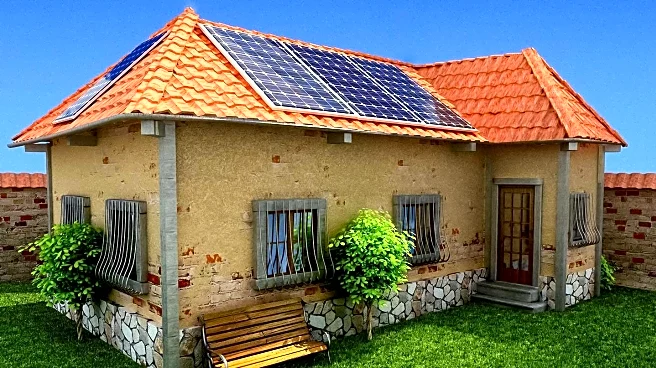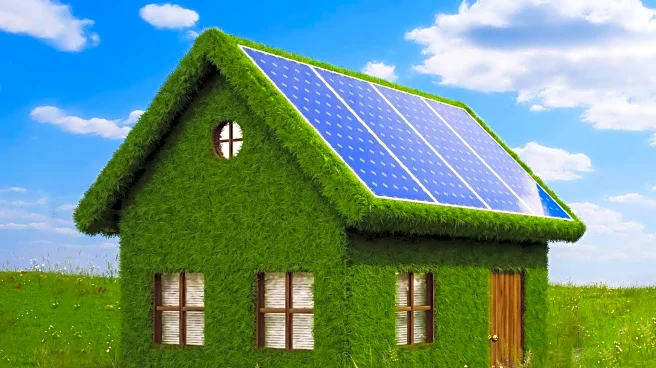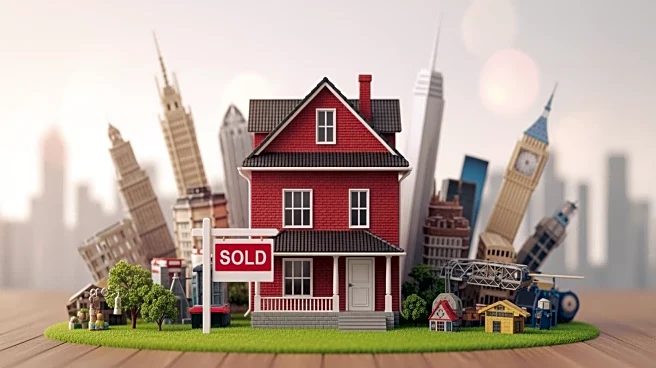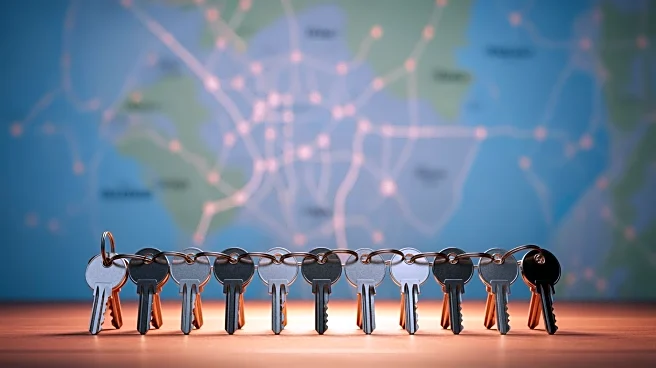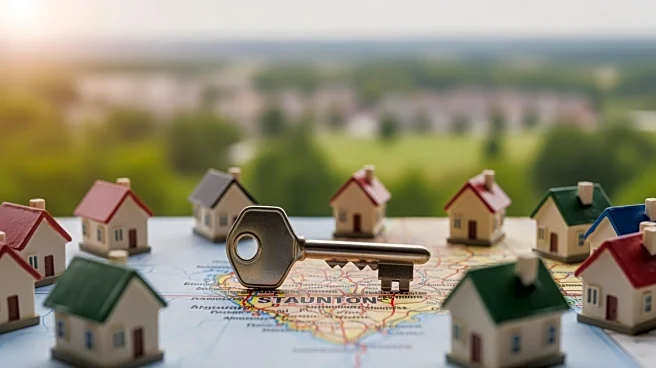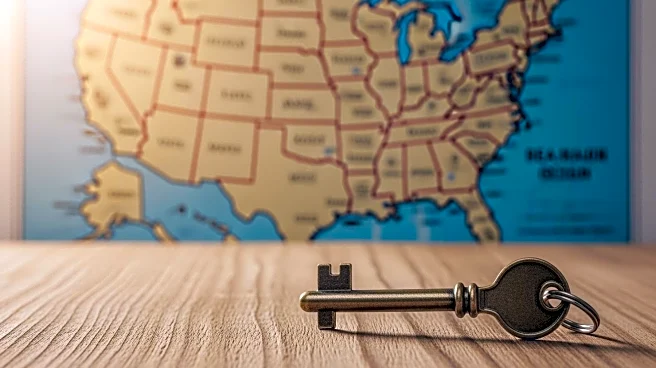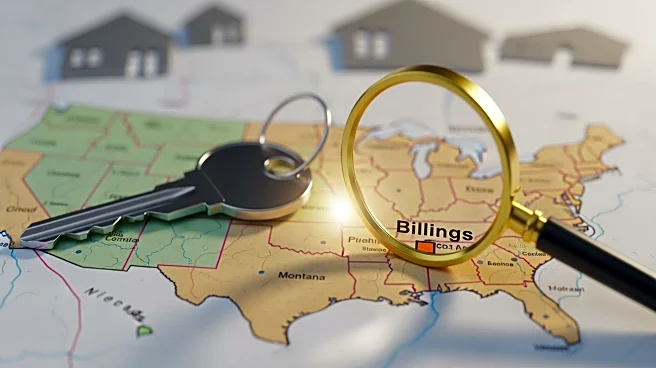What's Happening?
Realtor.com has released its 2025 Home Trends Report, highlighting a significant shift in U.S. homeowners' preferences towards sustainable and tech-forward home features. The report indicates a growing
interest in efficiency, sustainability, and nature-inspired design, with features like WaterSense Fixtures, Net-Zero Ready homes, and EV Charging stations seeing substantial increases in mentions within listing descriptions. WaterSense Fixtures, which reduce water usage by at least 20%, topped the list with a 289.6% year-over-year increase. The report also notes a decline in more opulent features such as formal dining rooms and infinity-edge pools, as buyers favor modern, natural, and right-sized design choices. This trend reflects a broader commitment to simplicity and functionality in living spaces.
Why It's Important?
The shift towards sustainable home features is significant as it reflects changing consumer priorities in the face of rising energy costs and climate concerns. Homeowners are increasingly viewing eco-friendly upgrades as both a lifestyle choice and a smart financial investment. This trend could have a substantial impact on the real estate market, influencing home values and buyer preferences. As energy efficiency becomes a key selling point, homes with sustainable features may command higher prices, appealing to mid- to upper-tier markets. Additionally, the integration of technology in homes, such as smart lighting and built-in coffee systems, highlights the lasting influence of hybrid work and digital lifestyles.
What's Next?
As the demand for sustainable and tech-forward home features continues to grow, real estate developers and builders may increasingly focus on incorporating these elements into new constructions and renovations. This could lead to a rise in the availability of eco-friendly homes, potentially influencing zoning laws and building codes to accommodate these changes. Homeowners and buyers may also seek out properties that offer long-term savings on utility costs, further driving the market towards sustainability. Additionally, the trend towards biophilic design, which integrates natural elements into living spaces, may continue to gain popularity, influencing architectural styles and interior design choices.
Beyond the Headlines
The trend towards sustainable home features may also have broader implications for environmental policy and consumer behavior. As more homeowners prioritize eco-friendly upgrades, there could be increased pressure on policymakers to support green initiatives and incentivize sustainable practices. This shift may also encourage innovation in the home improvement industry, leading to the development of new technologies and materials that enhance energy efficiency and reduce environmental impact. Furthermore, the emphasis on simplicity and functionality in home design could influence cultural attitudes towards consumption and lifestyle choices, promoting a more mindful and sustainable way of living.
